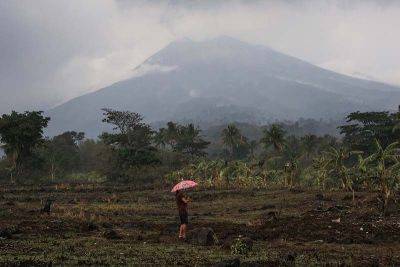Rainy season starts in Philippines after 'cruel summer'
MANILA, Philippines — After a scorching dry season, state weather bureau PAGASA on Wednesday declared the start of the rainy season in the Philippines.
In a statement, PAGASA said the recent scattered rain showers, frequent thunderstorms, Typhoon Aghon (international name: Ewiniar), and the southwest monsoon (habagat) marked the onset of the rainy season in the country.
Additionally, a high chance of La Niña developing by the July-August-September period increases the likelihood of above-normal rainfall conditions in some parts of the Philippines, especially towards the end of the year.
PAGASA, however, noted that breaks in rainfall events, also known as monsoon breaks, may occur and last for several days or weeks.
“The public and all concerned agencies are advised to take precautionary measures against the adverse impacts of the rainy season, Habagat, and the impending La Niña such as floods and rain-induced landslides,” the weather agency said.
Aghon, the first tropical cyclone to hit the country this year, left the Philippine Area of Responsibility this afternoon after battering the eastern section of the country with strong winds and heavy rain.
The Philippines faces an average of 20 cyclones entering or developing within its area of responsibility annually, destroying homes and crops and claiming the lives of hundreds to thousands.
Global temperatures hit record highs last year, with the World Meteorological Organization highlighting a particularly rapid warming trend across Asia.
Exceptionally hot weather also affected the Philippines and other parts of Asia in April and May, triggering school closures, threatening power grids, and damaging crops.
Scientists from the World Weather Attribution Group said the extreme temperatures last month were made worse and more likely by human-caused climate change.







